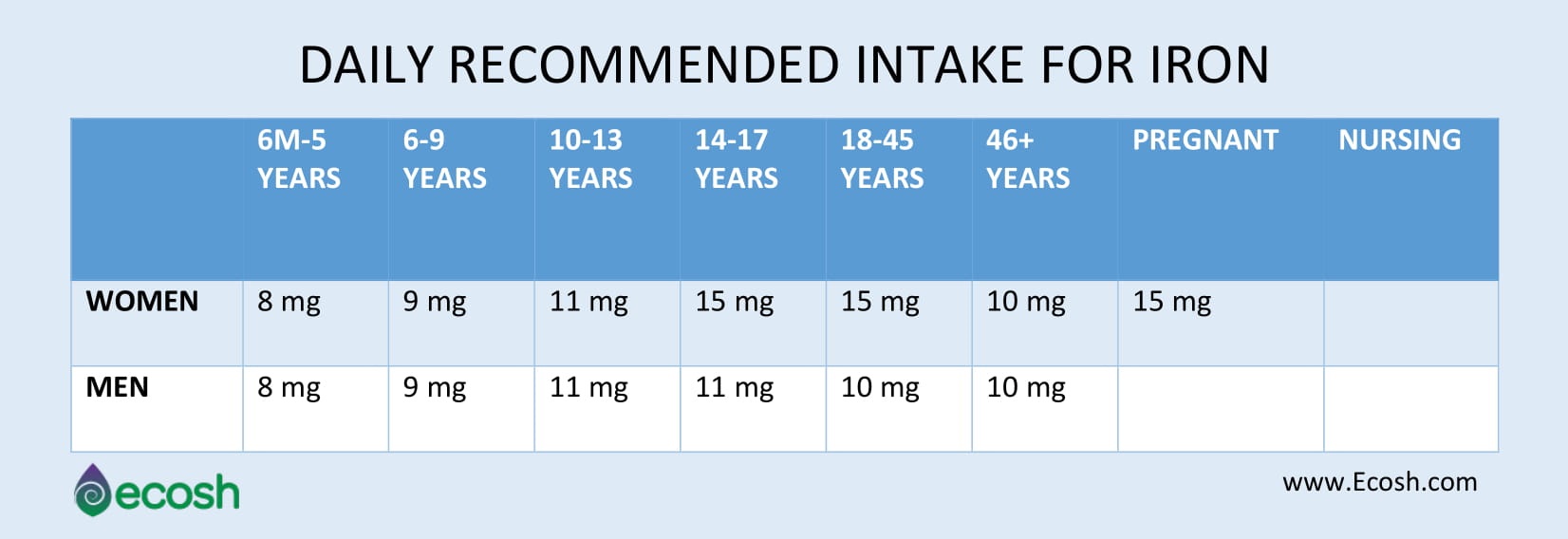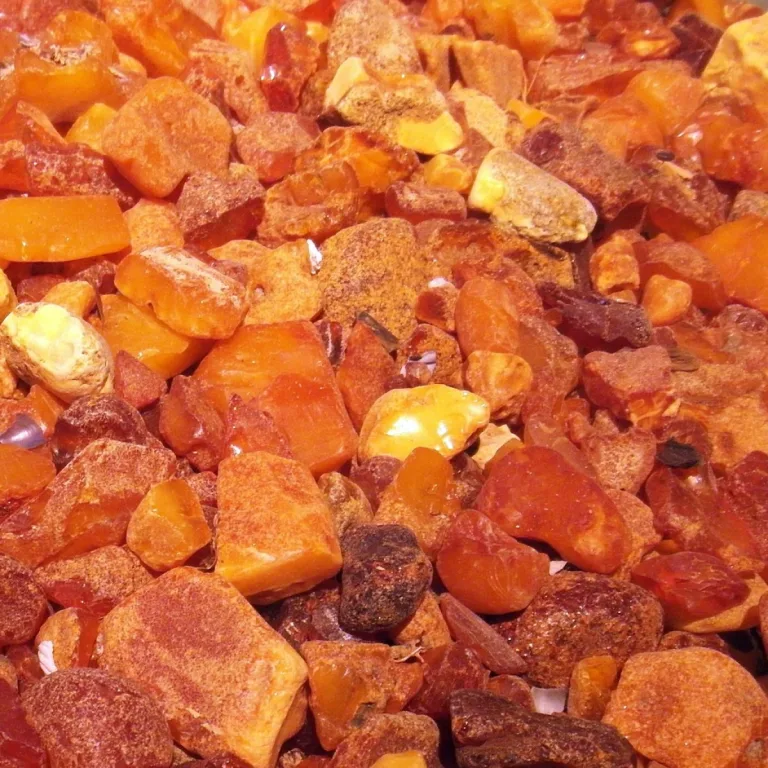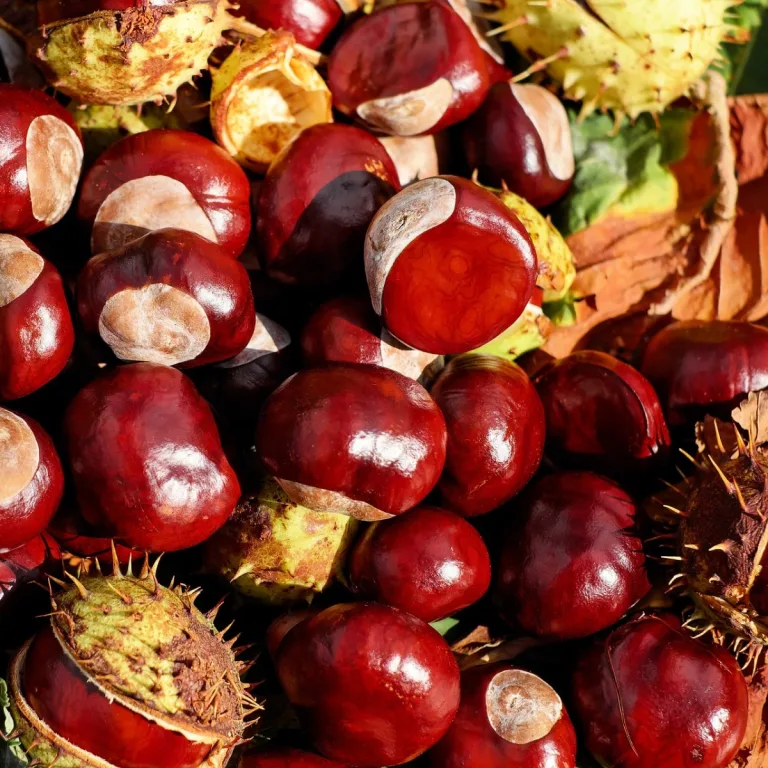Iron deficiency occurs when there is not enough iron in the body. Quite often, a person does not even suspect iron deficiency, because the characteristics of this situation are quite general. However, there are 12 main symptoms that indicate iron deficiency.
If you don`t want to wait until the symptoms show, we have a good news for you! There is a simple method how you can test the possible iron deficiency in your body before the serious health conditions appear. You can read about this simple home test method below.
Also about the causes of iron deficiency, what foods contain nonheme iron, what foods contain heme iron, what is the difference between nonheme and heme iron, and which ones are the best absorbing iron food supplements.
12 Symptoms of Iron Deficiency
1. Fatigue and tiredness
Fatigue is the most common sign of iron deficiency, as the body needs iron for the production of hemoglobin. Hemoglobin is a protein in red blood cells that helps the body transport oxygen. When the body does not have enough hemoglobin, the tissues and muscles do not receive enough oxygen, which results in reduced performance and fatigue. This results in a condition called anemia. Although there are different types of anemia, iron deficiency anemia is the most common in the world.
2. Pale skin
Pale skin and dark circles under the eyes are another major sign of iron deficiency. Because hemoglobin in red blood cells gives the blood a red color, and the lack of hemoglobin reduces the red color of the blood, which in turn causes the skin to become pale. The pinkish tone on the cheeks, lips and gums will be lost. If you want to test iron deficiency, pull down your eyelid. If the eyelid is pale pink or yellowish color on the inside, it also refers to iron deficiency.
3. Changes in heart rate
Because iron deficiency affects the number of red blood cells, a lack of them can also complicate your hearts work. Heart palpitations, chest pains and respiratory arrest may occur more often and eventually this can lead to more severe heart disease.
4. Shortness of breath
Because iron levels in the body are low during iron deficiency, oxygen levels are also low. This means that the muscles do not get enough oxygen to work normally. This can affect even simple things like walking. As a result, the rate of breathing increases as the body tries to get more oxygen. Therefore, dyspnea is a common symptom.
5. Restless Legs Syndrome
This usually results in a feeling of discomfort in the legs, where the person has an irresistible urge to move to relieve it. Unfortunately, this uncomfortable feeling cannot be relieved by moving or scratching. This syndrome is one of the strangest symptoms of iron deficiency.
6. Cold hands and feet
If you constantly complain about cold hands and feet that do not want to warm up in any way, it also signals that there might be a problem with your blood or blood circulation and you should do a blood test.
7. Dizziness and headaches
This symptom, along with chest pain, is a signal from the body that you should lie down because oxygen flow to the brain (and heart) is impaired. Low hemoglobin levels in red blood cells mean that the brain does not receive enough oxygen. As a result, blood vessels in the brain may swell, causing pressure and headaches.
8. Strange appetites
Iron deficiency can lead to a desire for things that are actually unsuitable for eating, such as clay, soil, sand, paper and ice.
9. Hair problems
In addition to these symptoms, human hair may become brittle and even prematurely gray.
10. Nervous system disorders
Other disorders of the nervous system are memory disorders, anxiety, weakness, sensations of mischief.
11. Gastrointestinal disorders
Gastrointestinal signs include loss of appetite, nausea, abdominal pain, vomiting, constipation or diarrhea, inflammation of the tongue, ulceration of the mucous membranes of the mouth, dysphagia.
12. Chronic cough (especially in children)
Iron helps to regulate the production of proteins in the immune system that control inflammation, and an iron deficiency might make the upper airway more prone to inflammation, leading to chronic cough.
Risk Groups of Iron Deficiency
Most iron in the body is found in blood hemoglobin (85%) and in myoglobin, which is a protein in muscle cells. Iron is involved in numerous metabolic reactions in the body and is in composition of several enzymes. It is required for the activity of many chemical reactions in the brain, immune system and other tissues.
Iron is thus important for the functioning of the immune system as well as for the functioning and development of the brain and nervous system.
Iron deficiency anemia is widespread in schoolchildren, adolescents and women aged 15-50 years. In particular, women with heavy menstrual bleeding so called menorrhagia (at least 30% them suffer from iron deficiency). Symptoms develop gradually and may go unnoticed.
Anemia occurs in 45% of women during pregnancy. In fetus and children, iron deficiency may inhibit the development of the central nervous system.
As a result, these groups of people may have an increased risk of iron deficiency anemia:
- Infants and young children
- Adolescents
- Women in their reproductive years
- Recent blood donors
- Vegetarians
- Pregnant women
- Premature newborns or in children with low birth weight
- Teenage girls
- People who suffer gastrointestinal disorders
- People who have vitamins C, B12 and B9 deficiency.
Causes of Iron Deficiency
Iron deficiency may occur in case of:
- Taking aspirin
- Drinking high levels of coffee, milk and strong tea (more than 3 cups a day of intake9
- Vegetarian diet
- Prolonged fasting
- Suffering from disease
- Physical overload
- Ulcers
- Aging
- Amino acid tyrosine deficiency
- Deficiency of vitamins A, C, B12 and B9
- Fluorine deficiency
- Copper deficiency
- Excess vitamin B6
- Excess calcium
- Major blood loss
- Pregnancy
- Premature birth or low birth weight
- Gastrointestinal disorders
Women are three times more likely to develop iron deficiency than men (due to menstruation, childbirth, pregnancy and lactation). The occurrence of anemia is indicated by a fall in hemoglobin concentration below the normal value, which can be detected by a blood test.
In men, normal hemoglobin values range from 130 to 170 g / l and in women from 120 to 150 g / l.
The daily dose of iron is usually 15-18 mg, while the maximum and therapeutic dosage is 50 mg. However, only your doctor or physician can determine the therapeutic dose. A 70kg man has about 4 grams of iron in his body. Women’s iron reserves are 1/5 higher. Iron stores are found in bone marrow, liver and spleen.
How much iron should a healthy organism contain?
Also skeletal muscles, heart muscles and other places in your body contain ferritin. 95% of iron is present in cells and about 5% is extracellular.
What is the daily recommended intake for iron?
The iron need and absorption of different organisms may varie from time to time. Only 10-15% of the iron is absorbed from your daily diet. However, if your iron stores are low, the body’s ability to bind iron will increase. For example, during pregnancy and lactation, when the iron requirement is higher in women, its absorption is quadrupled.
- Determining the iron requirement of women is the hardest thing – for some, 12mg is enough, for others even 18mg is low.
- For men and for women who have already passed the menopause, less iron is recommended – only 10 mg a day.
- During pregnancy, a normal diet cannot cover the needs of fetal growth. Therefore, it is very important to take iron supplements as recommended by your doctor or pharmacist.
- Infants aged 6 months to 6 years need about 8 mg iron daily.
- Schoolchildren aged 7 to 10 should receive about 10 mg daily.
- For adolescent boys, 12 mg is recommended.
- Girls’ iron requirements increase to the same level as women when they start menstruation.
Vitamins A, B2, and C, nickel, cobalt, copper, manganese, molybdenum and fluorine promote iron uptake.
What Foods Contain Iron?
There are two forms of dietary iron – heme and nonheme.
Heme iron is found in animal foods that originally contained hemoglobin, such as:
- blood;
- liver;
- red meats;
- fish,
- poultry.
Seafood, poultry and meat contain both- non-heme and heme iron. Your body absorbs the most iron from heme sources meaning from animal foods, because its absorption is not dependent on other foods or gastric acid.
NB! Iron intake from plant foods is almost impossible without the simultaneous intake of foods containing vitamin C or other organic acids. Your body absorbs nonheme iron most easily from rye bread and soy products.
The major nonheme iron sources per 100 g
- Garden Thyme 95 mg
- Dandelion 90 mg
- Dock 70 mg
- Plantago 70 mg
- Nettle 30 mg
- Raspberry 20 mg
- Blueberry 20 mg
- Pumpkin 11 mg
- Sesame seeds 10 mg
- Flax seeds 8 , 2 mg
Other good sources of nonheme iron are:
- Legumes (beans, lentils, peas) are the best sources of nonheme iron, however they need to be processed before your body can absorb them better
- Nuts (especially hazelnut)
- Seeds (especially poppy, sesame, sunflower and pumpkin seeds)
- Dried fruits (apricots, peaches, plums, raisins)
- Red beet juice
Iron Dietary Supplements
If choosing iron supplements, make sure to pick quality and well absorbing products.
Maria-Helena Loik
Pictures: Pexels.com, Pixabay.com, Shutterstock.com







